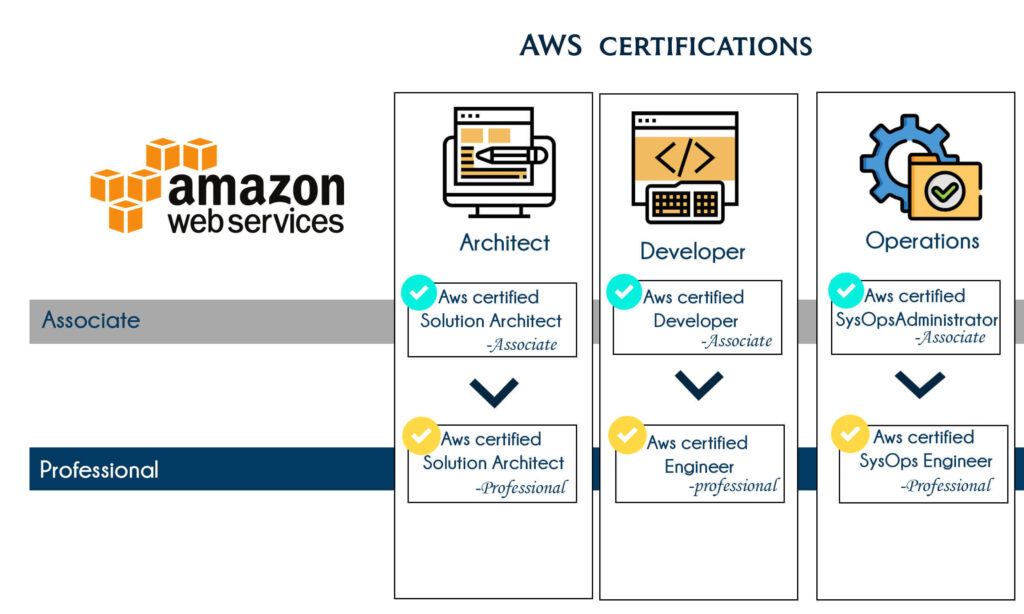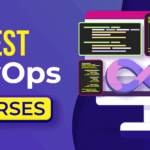My Journey to Mastering the Cloud: Why an AWS Course Changed Everything
Not long ago, I found myself standing at a crossroads in my professional life. The world of technology was buzzing with terms like "cloud computing," "digital transformation," and "AWS." Honestly, it all sounded a bit like magic, or perhaps a secret language only spoken by tech wizards. I’d hear colleagues mention AWS, and my mind would conjure images of intricate servers and complex code, things I felt were way beyond my reach.
But beneath that initial intimidation, a tiny spark of curiosity flickered. I saw how the tech landscape was changing, how more and more businesses were moving their operations to the "cloud." It wasn’t just a trend; it was the new way of doing things. And if I wanted to stay relevant, to grow, and to open new doors in my career, I knew I had to understand it. That’s when I decided to take the plunge and explore an AWS course.
The Cloud’s Call: Why I Needed to Learn AWS
Before I even started looking for an AWS course, I spent some time thinking about why this mattered. I realized that cloud computing, particularly Amazon Web Services (AWS), wasn’t just about servers anymore. It was about flexibility, innovation, and solving problems faster. Companies, big and small, were using AWS to host their websites, store their data, run their applications, and even power things like artificial intelligence.
I saw friends in various industries, from marketing to finance, finding new opportunities because they understood cloud concepts. It wasn’t just for IT professionals; it was becoming a foundational skill for almost anyone working in a data-driven environment. I wanted to be part of that future, to equip myself with knowledge that would truly make a difference. I wanted to not just hear about the cloud, but to understand it, to build with it. And for that, I needed structured AWS training.
Picking My Path: The AWS Course Search
The internet is a vast place, and searching for "best AWS course" or "learn AWS for beginners" brought up a dizzying array of options. I felt a little overwhelmed, but I had a few key things in mind:
- Beginner-Friendly: I was starting from almost zero. I needed a course that didn’t assume prior knowledge of networking or advanced programming. It had to explain things clearly, step by step.
- Practical & Hands-On: Reading slides wasn’t going to cut it. I needed to do things. I looked for courses that emphasized practical labs and real-world scenarios.
- Reputable: I wanted a course taught by experienced instructors who truly understood AWS, not just someone reading from a script. Reviews and testimonials became my best friends.
- Flexible: As someone with a busy schedule, an online AWS course was essential. I needed to learn at my own pace, fitting study sessions around my existing commitments.
After sifting through many options, comparing syllabi, and watching introductory videos, I finally settled on an online AWS course that promised a comprehensive introduction to the core AWS services, geared specifically for beginners aiming for an entry-level certification like the AWS Cloud Practitioner or Solutions Architect Associate. It felt like a big decision, but also a truly exciting one.
Stepping into the AWS World: My Learning Adventure
My first few lessons in the AWS course felt like learning a completely new language. There were acronyms everywhere: EC2, S3, VPC, IAM, RDS. Each new term felt like a foreign word, and I worried I’d never keep them straight. But my instructor, a patient and engaging guide, broke everything down into manageable pieces.
He started with the very basics: What is cloud computing? Why do we use it? What exactly is AWS? He explained that AWS is essentially a giant collection of services – like a digital toolbox – that you can rent and use as needed, instead of buying and maintaining your own physical hardware.
We began with foundational concepts:
- Compute (EC2): This was like renting a virtual computer in the cloud. We learned how to launch instances, choose different types, and connect to them. It was thrilling to spin up my first server with just a few clicks!
- Storage (S3): This is where you store files, like photos, videos, or website assets. It’s incredibly durable and accessible from anywhere. I remember uploading my first file and feeling a real sense of accomplishment.
- Networking (VPC): This felt a bit more complex initially. It’s about setting up your own private, isolated section of the AWS cloud. We learned about subnets, security groups, and how to control who can access what. It’s like building your own secure digital neighborhood.
- Identity & Access Management (IAM): This is all about security – who can do what in your AWS account. It teaches you how to create users, assign permissions, and keep your resources safe.
Hands-On Magic: Where Theory Met Practice
The most valuable part of my AWS course was undoubtedly the hands-on labs. The instructor didn’t just tell us how things worked; he showed us, and then we did it ourselves. There were dedicated lab environments where I could experiment without fear of breaking anything important.
I remember fumbling at first, making mistakes, and having to re-read instructions. But each time I successfully launched an EC2 instance, created an S3 bucket, or configured a VPC, that ‘aha!’ moment felt incredibly rewarding. It was during these practical exercises that the abstract concepts started to solidify. I wasn’t just memorizing definitions; I was actually building things in the cloud.
These labs were critical. They transformed the theory into tangible skills. I learned to troubleshoot, to read error messages, and to think like a cloud engineer. This practical experience is what truly differentiates a good AWS training program from a mediocre one.
Navigating the Bumps: Overcoming My Doubts
It wasn’t always smooth sailing. There were days I felt like giving up, especially when a concept didn’t immediately click or when my lab environment threw an unexpected error. I questioned if I was cut out for it, if I could truly grasp such complex technology. This feeling, often called ‘imposter syndrome,’ is common for many beginners.
But the course structure, with its clear progression and supportive community forums, helped me push through. I learned the importance of taking breaks, of re-watching lessons, and of asking questions. Slowly but surely, the pieces started to fit together. Each small victory, like successfully deploying a simple web server or understanding a complex networking diagram, fueled my motivation to keep going.
The Transformation: What Changed After My AWS Course
Finishing my AWS course felt like crossing a finish line, but it was also the start of a whole new race. I emerged with a newfound confidence, not just in my ability to understand cloud technology, but in my capacity to learn complex new skills.
My resume suddenly looked different. "Proficient in AWS core services" wasn’t just a buzzword; it was a skill I could demonstrate. I started applying for roles that previously felt out of reach. In conversations, I could now intelligently discuss cloud architecture, cost optimization, and security best practices. My career trajectory felt different, more aligned with the direction the world was heading.
I even started working on my own small projects, hosting a personal website on AWS, and experimenting with serverless functions. The course didn’t just teach me facts; it gave me a digital toolbox and the confidence to use it creatively.
My Advice to You, Future Cloud Enthusiast
If you’re where I was a while back – curious, a little intimidated, but eager to learn – I have some advice:
- Just Start: The hardest part is often just beginning. Don’t wait for the "perfect" moment or for all your doubts to vanish. Find an AWS course for beginners that looks promising and dive in.
- Embrace the Hands-On: Theory is important, but practical experience is where the real learning happens. Don’t skip the labs. Get your hands dirty, even if you make mistakes. That’s how you truly learn.
- Be Patient with Yourself: Cloud computing is a vast field. You won’t grasp everything overnight. There will be moments of frustration. That’s normal. Keep going. Break down big topics into smaller, digestible chunks.
- Connect with Others: Join online communities, discussion forums, or study groups. Learning from others’ questions and experiences can be incredibly helpful.
- Don’t Fear Failure: You’ll make mistakes in the labs. You’ll misconfigure things. That’s okay! It’s part of the learning process. Each error is an opportunity to learn something new.
- Consider Certification: While not mandatory, working towards an AWS certification (like the Cloud Practitioner or Solutions Architect Associate) can provide a great structure for your learning and validate your skills to potential employers.
The Road Ahead: A World of Possibilities
Taking that initial AWS course was one of the best decisions I’ve made for my professional growth. It opened up a world of possibilities I hadn’t even considered. The cloud is no longer a mystery; it’s a powerful tool that I’m learning to wield.
Whether you’re looking to change careers, enhance your current role, or simply understand the technology shaping our world, investing in AWS training is an investment in your future. The demand for cloud skills continues to grow, and having a solid foundation in AWS will set you apart. So, take that leap. Start your own cloud adventure. You might be surprised at where it takes you.



